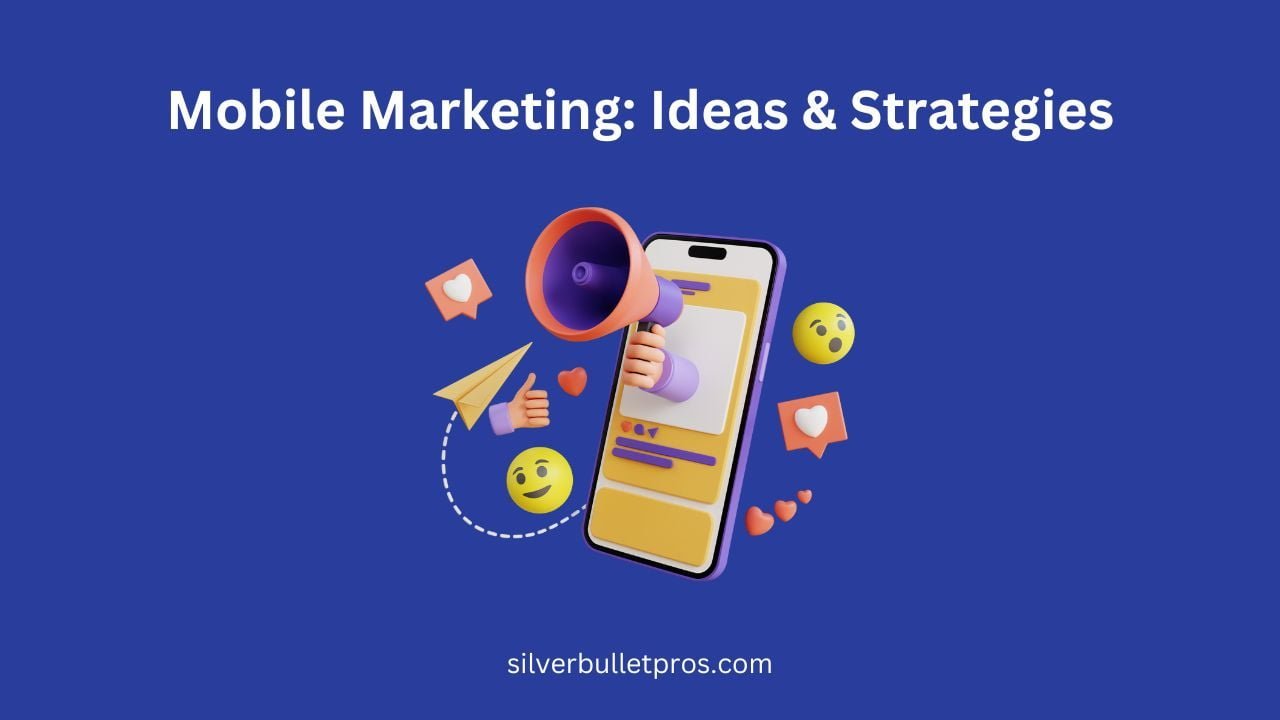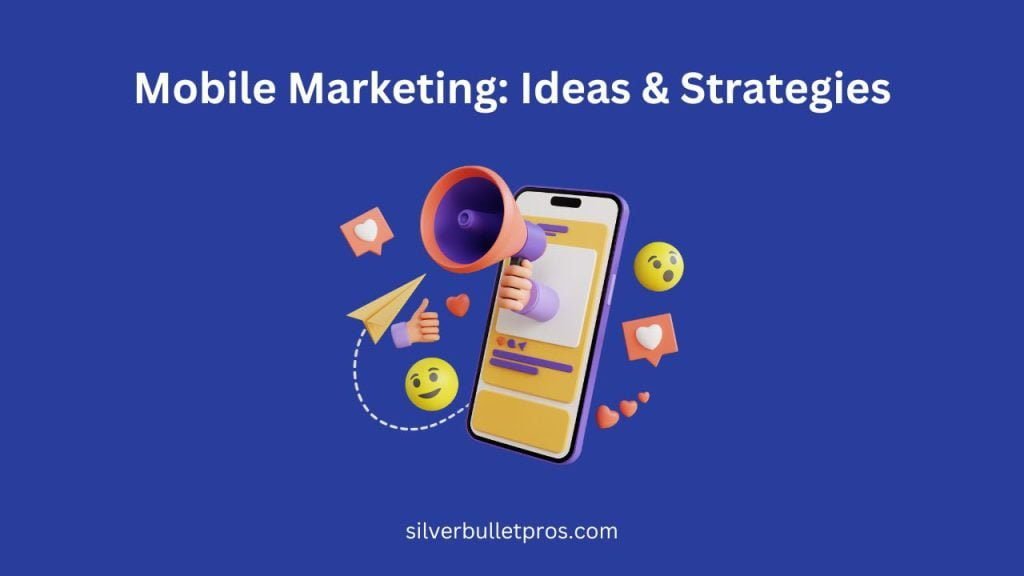

Mobile marketing is a multi-channel digital marketing strategy aimed at reaching a target audience on their smartphones, tablets, and other mobile devices. This approach includes various tactics, from SMS and MMS marketing to more advanced techniques like augmented and virtual reality. Understanding and utilizing these strategies can significantly enhance engagement, drive sales, and improve customer loyalty.
SMS Marketing
SMS marketing is a form of mobile marketing that uses text messages to communicate with customers. It is an effective way to send short, timely messages directly to a customer's phone.
SMS marketing is powerful due to its high open rate of around 98%, compared to emails which have about a 20% open rate . This makes SMS an excellent tool for time-sensitive promotions, alerts, and reminders. For instance, retail stores often use SMS to inform customers about flash sales or exclusive offers, driving immediate action. By keeping messages concise and including a clear call-to-action (CTA), businesses can see a significant return on investment.
MMS Marketing
MMS marketing takes SMS marketing a step further by incorporating multimedia elements such as images, videos, and audio. This can make messages more engaging and informative.
MMS marketing allows for more creativity and visual appeal, which can enhance the customer experience. For example, a restaurant could send out a mouth-watering image of a new dish, enticing recipients to visit. While MMS messages have a higher cost than SMS, their impact can justify the expense, especially for campaigns where visual content is crucial.
Push Notifications
Push notifications are messages sent from apps directly to a user's mobile device. These notifications can pop up on the lock screen or appear as alerts.
Push notifications are effective for re-engaging users who have previously interacted with an app. They boast an open rate of about 90% . For example, an e-commerce app can use push notifications to remind users of items left in their cart or to alert them about special discounts. Personalization is key here; tailored messages based on user behavior can significantly boost engagement and retention rates.
In-App Advertising
In-app advertising involves placing ads within mobile apps. These ads can be banners, videos, or interactive content.
In-app ads are a great way to monetize apps while providing value to advertisers. They are highly effective because they reach users where they spend a significant amount of time. According to recent statistics, in-app ads have a click-through rate (CTR) of 0.58% for banners and up to 1.84% for videos . This makes them a valuable channel for brands looking to reach a captive audience.
Location-Based Marketing
Location-based marketing uses GPS and other location data to target users based on their current or past locations. This strategy can deliver highly relevant and timely messages.
Location-based marketing allows businesses to reach customers in specific areas, making it ideal for local promotions. For example, a coffee shop could send a discount offer to users who are nearby during the morning rush. By leveraging geofencing technology, businesses can create virtual boundaries and trigger messages when users enter or leave these areas.
App Marketing
App marketing encompasses various strategies to promote mobile apps and increase downloads and user engagement.
Effective app marketing starts with app store optimization (ASO) to improve visibility in app stores. Beyond ASO, tactics like social media promotion, influencer partnerships, and paid advertising can drive downloads. Once users have downloaded the app, retention strategies such as onboarding processes, regular updates, and loyalty programs are crucial to keep users engaged and active.
QR Codes
QR codes are scannable barcodes that can link to websites, apps, or other digital content. They are a simple and effective tool for bridging offline and online experiences.
QR codes can be placed on physical advertisements, product packaging, or in-store displays to provide additional information or promotions. For example, a clothing store could use QR codes on tags to link to styling tips or customer reviews. As smartphone adoption increases, QR codes have become more popular and easier to use, making them a valuable component of mobile marketing strategies.
NFC Marketing
NFC (Near Field Communication) marketing involves using NFC technology to enable communication between devices when they are close to each other. This can facilitate contactless transactions and information exchange.
NFC marketing is particularly effective for enhancing the customer experience in retail settings. For instance, NFC tags on product shelves can provide detailed information when tapped with a smartphone. Additionally, NFC technology is widely used for mobile payments, offering a seamless and secure way for customers to complete transactions.
Augmented Reality
Augmented reality (AR) integrates digital elements into the real world through a smartphone or tablet. AR can create immersive and interactive experiences for users.
AR marketing is highly engaging and can differentiate a brand in a crowded market. For example, a furniture retailer could offer an AR app that allows customers to visualize how different pieces would look in their homes. AR not only enhances user engagement but also helps customers make informed purchasing decisions, thereby increasing conversion rates.
Virtual Reality
Virtual reality (VR) creates a completely immersive digital environment that users can interact with using VR headsets. VR marketing provides unique and memorable experiences.
VR can be used for virtual tours, product demonstrations, and immersive storytelling. For instance, a travel company could offer virtual tours of destinations to inspire and attract potential travelers. While the adoption of VR is still growing, its potential for creating impactful experiences makes it a valuable tool for forward-thinking marketers.
How to Use Biometrics for Mobile Marketing
To use biometrics for mobile marketing, integrate biometric authentication methods such as fingerprint scanning or facial recognition into your app or services. Biometrics can enhance security and personalize user experiences.
Biometric data can help tailor marketing efforts by providing insights into user behavior and preferences. For example, facial recognition technology can analyze customer reactions to different products, helping marketers understand which items generate the most interest. This data can then inform targeted advertising and product recommendations, improving overall marketing effectiveness.
How to Measure the Effectiveness of Mobile Marketing Campaigns
To measure the effectiveness of mobile marketing campaigns, use key performance indicators (KPIs) such as conversion rates, click-through rates, and engagement metrics. Tools like Google Analytics, mobile app analytics, and customer feedback surveys are essential.
By tracking KPIs, you can determine which campaigns are most successful and where improvements are needed. For example, if a push notification campaign results in high engagement but low conversion, you might need to adjust the CTA or offer. Regular analysis helps optimize strategies and maximize ROI.
How to Target Specific Customer Groups with Mobile Marketing
To target specific customer groups with mobile marketing, segment your audience based on demographics, behavior, and preferences. Use data analytics to create detailed customer profiles and tailor your messages accordingly.
Segmentation allows for more personalized and relevant marketing. For instance, a fitness app can target young adults with workout challenges while offering dietary advice to older users. Personalization increases the likelihood of engagement and conversion, as users are more likely to respond to content that resonates with their interests and needs.
How to Use Mobile Marketing to Increase Sales
To use mobile marketing to increase sales, leverage strategies such as targeted SMS campaigns, mobile-friendly websites, and personalized app experiences. Ensure that the purchasing process is seamless and user-friendly.
For example, an e-commerce site can send personalized product recommendations via SMS based on past purchases. Additionally, optimizing your website for mobile devices can reduce cart abandonment rates. By providing a smooth and engaging shopping experience, you can boost sales and enhance customer satisfaction.
How to Use Location Data for Mobile Marketing
To use location data for mobile marketing, employ geofencing and beacon technology to send location-specific messages and offers. Analyze location data to understand customer behavior and optimize marketing strategies.
Location data can help identify trends and patterns, such as peak shopping times or popular areas. For example, a retailer can use this data to schedule promotions during busy periods or to target customers in high-traffic locations. Leveraging location data ensures that your marketing efforts are timely and relevant, increasing their effectiveness.
Mobile Marketing in Various Industries
Mobile marketing is used across various industries to reach and engage customers. Here are a few examples:
- Retail: Retailers use mobile marketing to drive in-store traffic and online sales. Techniques include SMS discounts, in-app loyalty programs, and AR for virtual try-ons.
- Healthcare: Healthcare providers use mobile apps to send appointment reminders, health tips, and telehealth services. Push notifications ensure patients stay informed and engaged with their health.
- Travel and Hospitality: Travel companies use mobile marketing to offer personalized travel deals, mobile check-ins, and virtual tours. Location-based services can provide travelers with real-time updates and recommendations.
- Finance: Financial institutions use mobile marketing for account alerts, personalized financial advice, and mobile banking services. Biometric security ensures safe and convenient transactions.
- Entertainment: Media and entertainment companies leverage mobile apps for streaming, gaming, and social interaction. In-app advertising and push notifications keep users engaged with new content and updates.
By understanding and implementing these mobile marketing strategies, businesses can effectively reach their target audience, enhance customer engagement, and drive sales across various industries.